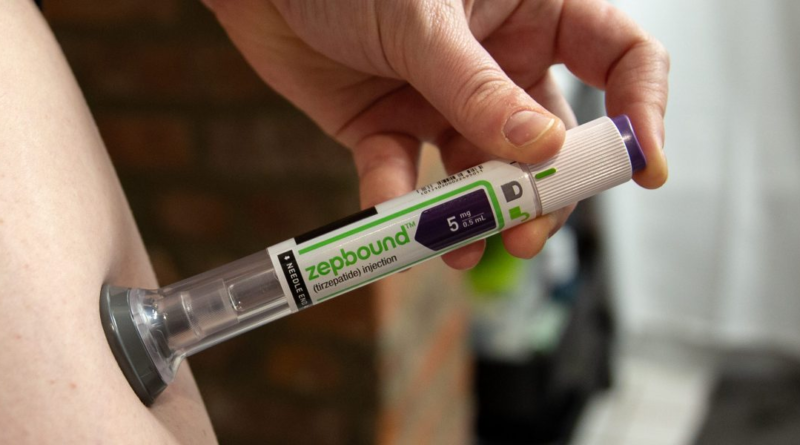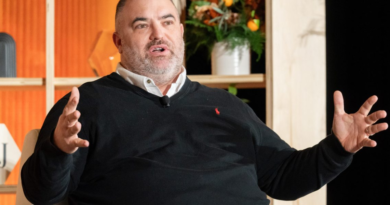Here’s the real reason Ozempic-like weight-loss drugs are so popular
Overweight and obesity rates have reached crisis levels and are risk factors for diabetes, heart disease, cancer, dementia, and other diseases.
The CDC estimates that that almost a third of Americans are now overweight and 42% of adults “have obesity,” now categorized as a disease. Childhood obesity is up—one in five kids are estimated to be affected.
This isn’t just an American crisis. The World Obesity Federation predicts that 51% of the world’s population will be overweight or obese within the next 12 years.
Causes include sedentary lifestyles, as more people work and play in front of computer screens, the food and beverage environment, eating more out of home, fewer safe places for physical activity, genetics, and taking certain medications.
GLP 1 drugs in action
Along have come new, highly popular GLP 1 weight loss drugs, including Ozempic, Wegovy, and Mounjaro. Oprah Winfrey did a TV special: Shame, Blame and the Weight Loss Revolution. After years of up and down weight, Oprah says it’s not your fault: Obesity is a disease. She’s losing weight on one of the new drugs and helping move the market. However, insurance coverage, including Medicare, will have the biggest impact on usage.
Brian Kay of Numerator, a research firm, reports that some 12% of respondents in their household panel are using one of the new GLP 1 drugs for diabetes and/or weight loss. About 75% say they are consuming smaller portion sizes and – based on Numerator’s purchase data – their grocery bills are down 6 to 9%. Alcohol and ice cream purchases have decreased while fish and yogurt are up. However, the main reason consumers report discontinuing the drug is cost – and then grocery spending returns to previous levels.
All this has major financial implications for the food and beverage industries, restaurants, food service operators, health insurance companies, and Medicare. And the total cost in health care, lost productivity, corporate insurance, and long-term care is enormous.
How we got here
In recent decades, food consumption has increased dramatically. The portion sizes for bagels, cheeseburgers, ice cream, restaurant servings of spaghetti, meatballs, and more are ever larger.
Many restaurant chains compete on volume meals, and consumers often equate volume with value. One result is considerable waste. ReFED, a research group, estimated that 70% of food wasted in restaurants is left on plates.
The journal Addiction describes “hyper-palatable foods” as a kind of food engineering in which fat, sodium, sugar, and other additives can also drive people to crave and overeat. Northeastern University’s Network Science Institute indicates that 73% of the U.S. food supply is ultra-processed.
Getting consumers to change their behavior is a tall order. Many are confused, misguided, or indifferent about eating healthier.
A Navy officer once told me about the difficulty of re-enlisting highly trained non-commissioned officers who became too heavy to meet Body Mass Index guidelines. “We make ‘em taller. You’d be surprised how many 5’10” guys are now 6’2”—at least on paper.”
A decade ago, the McKinsey Global Institute found that portion control was the most promising strategy for promoting a healthier lifestyle. In response, the Portion Balance Coalition (PBC) was formed as an alliance of major food and beverage companies, nonprofits, academics, and government to reduce obesity and improve health. It is led by the Business for Impact Center at Georgetown University.
Hank Cardello, the food and beverage expert chairing the Portion Balance Coalition, points out “stubborn roadblocks” to positive change. “Taste is everything. If consumers clamored for broccoli, it would be in every meal, snack, and beverage,” he says.
Recent research by the Coalition and the Natural Marketing Institute revealed five consumer segments:
- The “Well Beings” (most health proactive) – 28% of consumers
- The “Fence Sitters” (wannabe healthy) – 26%
- The “Food Actives” (mainstream healthy) – 12 %
- The “Magic Bullets” (lack commitment to a healthy lifestyle – 22%
- The “Eat, Drink and Be Merry’s” (least health active) – 12%
The PBC concluded that the “Well Beings” and “Fence Sitters”—especially those with children—do respond to smaller portions. The “Magic Bullets” and “Eat Drink and Be Merry” cohorts are largely unresponsive but may be receptive to the new weight loss drugs as well as “stealth health” (making imperceptible changes to portion sizes and reductions in less healthy ingredients).
Cardello and others are dubious of trying to force behavior change: legislating healthier products; frightening consumers away from comfort foods; changing the definition of healthy; warning labels on package fronts; and taxing soft drinks.
Portion balance is the most promising strategy to tackle the obesity and food waste crises. Companies that offer more choices and reasonable portions can achieve higher margins, improve consumer appeal, and maintain taste.
More must-read commentary published by Fortune:
The opinions expressed in Fortune.com commentary pieces are solely the views of their authors and do not necessarily reflect the opinions and beliefs of Fortune.



